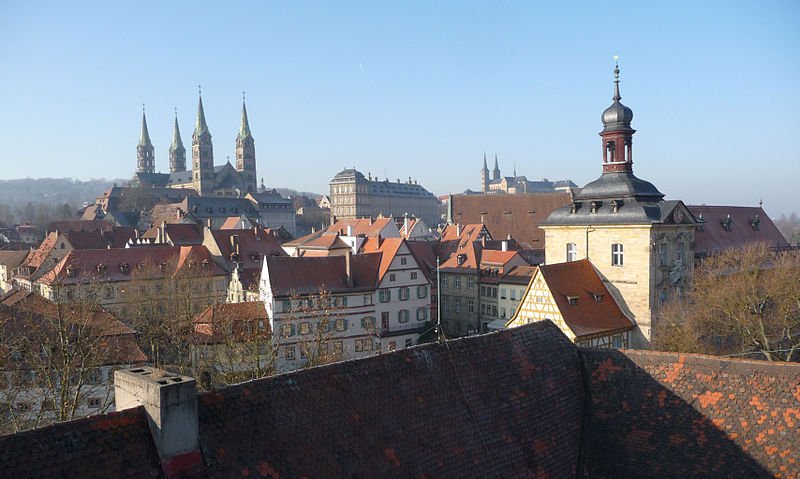 Bamberg, Germany
Bamberg, GermanySource: https://commons.wikimedia.org/wiki/File:Altes_Rathaus_%28Bamberg%29_10.JPG
Author: Immanuel Giel

Bamberg is a small city in Bavaria, Germany. The city is located in Upper Franconia, along the River Regnitz, near its confluence with the River Mann. It covers 54.58 sq km (21.07 sq mi) and has a population of 70,000 (2011 estimate). The city is in the Central European Time Zone, which is an hour ahead of Coordinated Universal Time (UTC+1) and two hours ahead during Daylight Saving Time in summer. The phone area code for Bamberg is 0951.
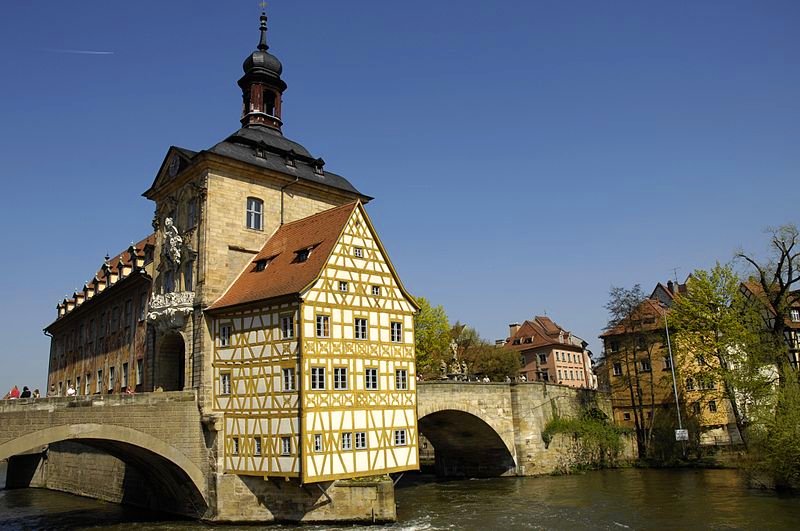 Altes Rathaus, Bamberg
Altes Rathaus, BambergSource: https://commons.wikimedia.org/wiki/File:161bamberg034.JPG
Author: Varus111

Bamberg is located by the banks of the Regnitz river, a tributary of the Main river, in the Franconia region of Bavaria, at the foothills of Steigerwald. It is about 63 km (39 mi) from Nuremberg and 101 km (63 mi) from Würzburg. Similar to Rome, Bamberg has seven hills surrounding it. They care Cathedral Hill (Domberg), Michaelsberg, Kaulberg, Stafansberg, Jakobsberg, Altenburger Berg and Abtsberg.
The Old Town of Bamberg is today a World Heritage Site. It was inscribed as a World Heritage Site during the 17th session of the World Heritage Committee which was held in Cartagena, Colombia, on 6-11 December, 1993.
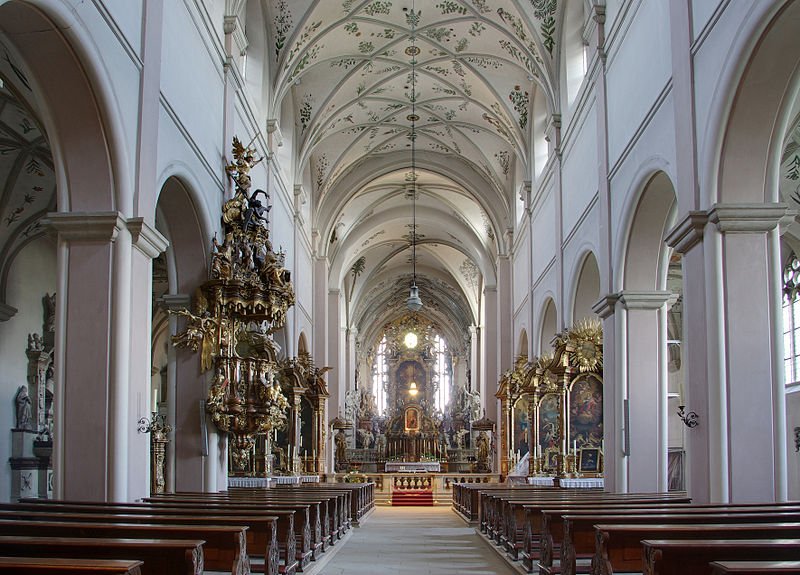 St Michael Church, Bamberg
St Michael Church, BambergSource: https://commons.wikimedia.org/wiki/File:Bamberg_Sankt_Michael_BW_5.JPG
Author: Berthold Werner

World Heritage Site Inscription Details
Location: N 49 53 30 E 10 53 20Inscription Year: 1993
Type of Site: Cultural
Inscription Criteria: II, IV Bamberg was made a World Heritage Site on account of its well-preserved medieval buildings. Bamberg was one of the cities not to be destroyed during the Second World War because it was well protected. An artillery factory located nearby prevented Allied planes from coming too near to Bamberg. As such, it retains many of its charming historic buildings such as the Altes Rathaus (Old Town Hall), which was built over the river.
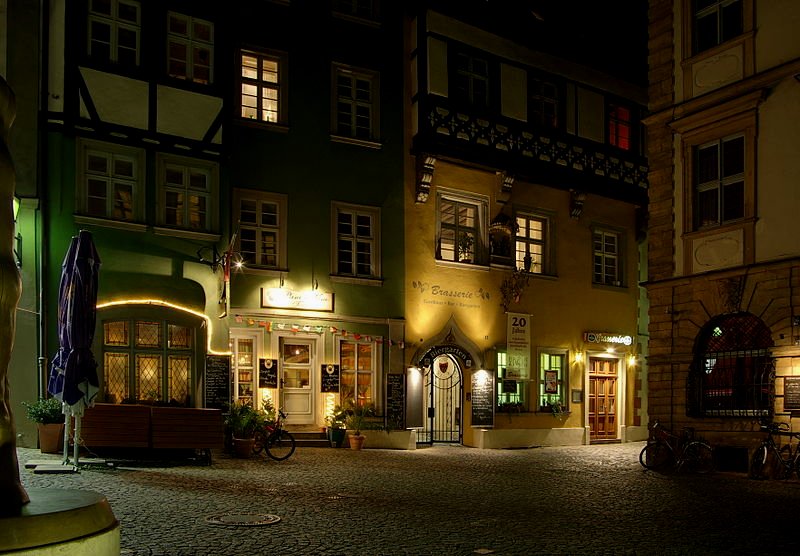 Pfahlplätzchen in Bamberg at night
Pfahlplätzchen in Bamberg at nightSource: https://commons.wikimedia.org/wiki/File:Bamberg_Pfahlplaetzchen_1.JPG
Author: Berthold Werner

Bamberg traces its history as a settlement of Slav people. It was first mentioned in AD 902. The town derived its name from the Babenberch Castle, which in turn got its name from the Babenberg family. The monks of the Benedictine Fulda Abbey converted the people and placed the land under the Diocese of Würzburg.
In AD 1008, Henry II King of the Romans negotiated with the Bishops of W&uumml;rzburg and Eichstätt for portions of their land to create the new Diocese of Bamberg. Following that, a new cathedral was built in 1012. Later King Henry II also established the Michaelsberg Abbey for the training of Benedictine monks.
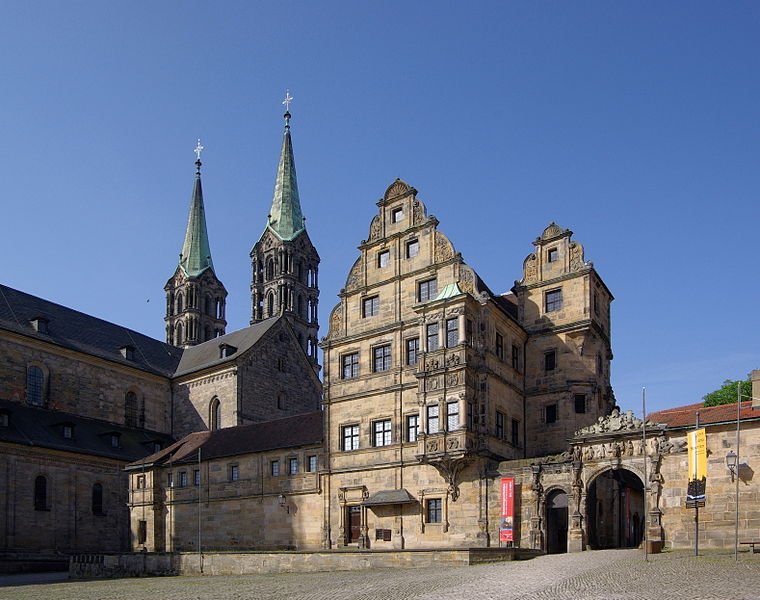 Bamberg Cathedral
Bamberg CathedralSource: https://commons.wikimedia.org/wiki/File:Bamberg_BW_2013-06-19_08-57-05.JPG
Author: Berthold Werner

Bamberg was the site of witch trials which claimed the lives of hundreds of people suspected of having dabbled in witchcraft. There was even a witch prison built in 1627, at the height of the witch hunt.
In the 18th century, the land belonging to the Diocesed of Bamberg began to fragmentize. A parcel was sold to Austria in 1759. Half a century later, in 1802, the rest of the church lands were secularized. Bamberg was effectively absorbed into Bavaria in 1803.
Through its history, the architecture of Bamberg has strongly influenced that of northern Germany and Hungary. It was the centre of Enlightenment in the late 18th century, a place where famous philosophers such as Hegel and Hoffman called home.
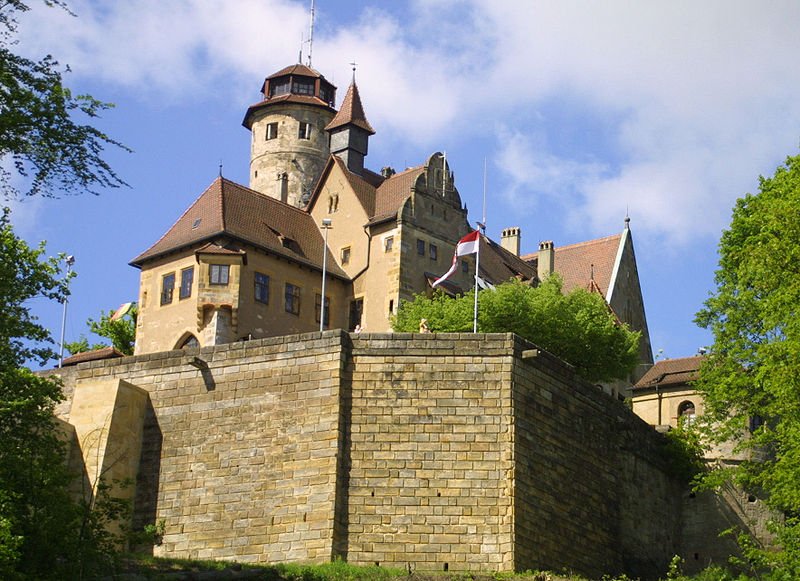 Altenburg, Bamberg
Altenburg, BambergSource: https://commons.wikimedia.org/wiki/File:Altenburg_Bamberg_02.JPG
Author: Immanuel Giel

Bamberg served as an interim capital for Bavaria after the First World War, when communist uprising in Munich forced the state government to flee to Bamberg, where it remained for two years until Munich was retaken by Freikorps units. During that period, the communists established a socialist state called the Bavarian Soviet Republic or Munich Soviet Republic.
Bamberg is famous for producing beer, particularly smoked Rauchbier. The city has eight breweries, an unusually high number for a city of just 70,000 people. The most famous beer from Bamberg is the Schlenkerla's Aecht Schlenkerla Rauchbier.
Visiting Bamberg, Germany
You can take a train to Bamberg from Munich, Berlin, Würzburg, Nuremberg and Bayreuth.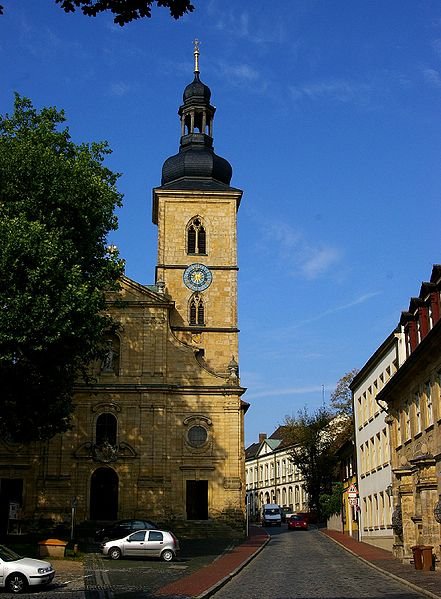 Jakobskirche, Bamberg
Jakobskirche, BambergSource: https://commons.wikimedia.org/wiki/File:Bamberg-Jakobskirche.JPG
Author: Reinhard Kirchner

World Heritage Site Inscription Details
Location: N 49 53 30 E 10 53 20Inscription Year: 1993
Type of Site: Cultural
Inscription Criteria: II, IV
Exploring Bamberg
The Old Town of Bamberg should be explored on foot to best appreciate its sights.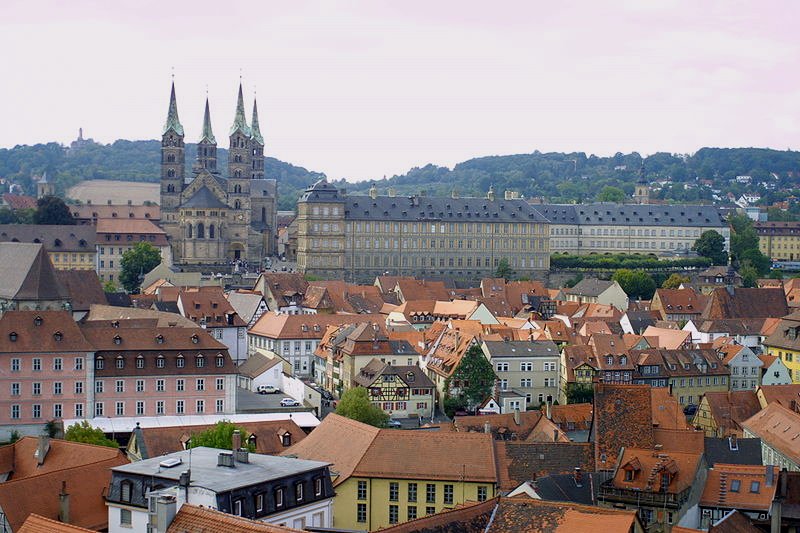 Bamberg, Germany
Bamberg, GermanySource: https://commons.wikimedia.org/wiki/File:Dom,_Residenz,_Sand_von_St._Martin_14-09-2003.JPG
Author: Johannes Otto Först

Places of Interest in Bamberg, Germany
- Alte Hofhaltung Historisches Museum
- Altes Rathaus
- Bamberg Cathedral
- Grünermarkt
- Kamelitenkloster
- Kirche St Michael
- Klein-Venedig
- Neue Residenz und Staatsgalerie
- Schloss Seehof
- Wasserschloss Concordia
 Latest updates on Penang Travel Tips
Latest updates on Penang Travel Tips
 Discover with Timothy YouTube Channel
Discover with Timothy YouTube Channel
 PG Food Channel
PG Food Channel
 Learn Penang Hokkien YouTube Channel
Learn Penang Hokkien YouTube Channel
 SojiMart Videos
SojiMart Videos
Latest from Discover with Timothy: Gurney Bay - what to see and do there
About this website

Hello and thanks for reading this page. My name is Timothy and my hobby is in describing places so that I can share the information with the general public. My website has become the go to site for a lot of people including students, teachers, journalists, etc. whenever they seek information on places, particularly those in Malaysia and Singapore. I have been doing this since 5 January 2003, for over twenty years already. You can read about me at Discover Timothy. By now I have compiled information on thousands of places, mostly in Peninsular Malaysia and Singapore, and I continue to add more almost every day. My goal is to describe every street in every town in Malaysia and Singapore.
Robbie's Roadmap
- Episode 1: Robbie's Journey to Financial Freedom
- Episode 2: Lost in America
- Episode 3: The Value of Money
- Episode 4: The Mentor
- Episode 5: The Thing that Makes Money
- Episode 6: The walk with a Billionaire
- Episode 7: The Financial Freedom Awakening
- Episode 8: Meet Mr Washington
- Episode 9: The Pizzeria Incident
Copyright © 2003-2024 Timothy Tye. All Rights Reserved.


 Go Back
Go Back